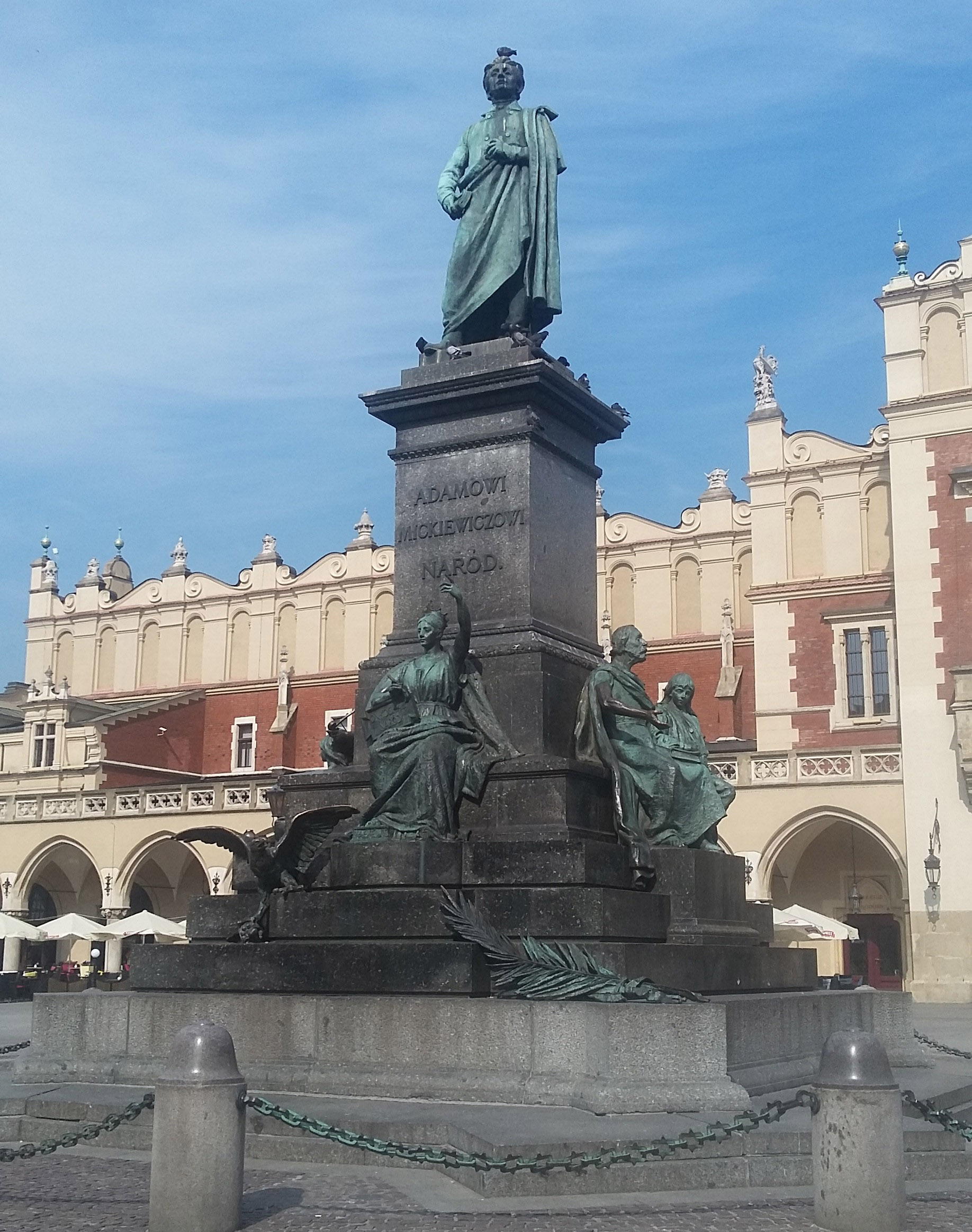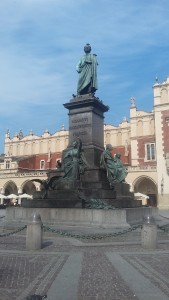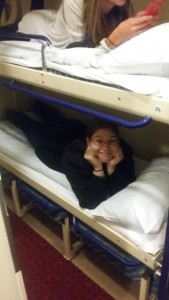
Hello from Poland! After a thrilling overnight train journey from Prague, we arrived in beautiful Krakow.
Hello from Poland! After a thrilling overnight train journey from Prague (ok, maybe not too thrilling), we arrived in beautiful Krakow. We had a nice walk towards the big town square where our hotel was located. There were a lot of stores, pubs, and other nice things to look at. The crowning jewel was St. Mary Cathedral, which towered over the square. There were flower and souvenir stalls all over, and carriages with beautifully decorated horses and smartly dressed drivers lined up for customers. It was a good first look, with all the great sounds, smells, and sights.
As soon as we dropped off our bags and picked up a packed lunch, we headed off to Oświęcim, the location of Auschwitz concentration camp. It took about an hour and a half, and most of its either looked out at the Polish countryside or slept (didn't get enough sleep on the train). When we arrived and tumbled out of the vans, we were introduced to our lovely tour guide, and started with Auschwitz I.
In all honesty, I don't know what to say. I personally was shocked, even though I knew a lot of the history of the place. I took one or two photos and then didn't pick up my phone after that. We all silently listened and stared, save for a few moments of quiet conversation. There was so much packed in one little area. Many buildings, with neat little streets, like a village. If you didn't know what it was, you would still feel the evil air. It was quiet, even though there were tons of people there. There were two buildings that I feel impacted us the most. The most horrifying of the two was the building where they displayed the stuff collected from the people arriving to the 3 camp complex. Piles of clothes, glasses, brushes, kitchenware, bags, shoes, and a small case of baby clothes. The worst was a room full of hair, shorn from every person's head that arrived to the camps. The second hardest building to look at contained pictures of prisoners, shaved, sickly looking, eyes staring ahead, full of emotion. Below each picture was their name, where they came from, birth date, and their time of deportation to their death. Some lived a couple months, some only a couple weeks or days. We also looked at the living quarters, the camp prison, replicas of the gas chambers and camp life, other materials used in the running of the camp, like the gas cans, and the smaller gas chamber that served Camp I.

After a quick lunch, we headed off to the second camp, Auschwitz-Birkenau. This camp was only a couple miles from the first camp and is unfortunately known as the biggest concentration camp. The shear number of people who came through here and died here; Poles, Jews, Romi and Sinti, Hungarians, Catholics, Germans, the list goes on of how many people found themselves here and in the other two camps. After walking through the big bricked entrance, we could see buildings and ruins for a great distance all lined up in a giant field, neatly bisected by a couple railroads, bordered by deep ditches. The Nazis demolished 7 villages to make these three camps, a factory, and a 40 square Km security zone. They took the village of Oświęcim for the guards and their families and brought Germans to come farm on the land. As we walked to the selection area, we looked around at all the ruins of buildings that once housed thousands of people, their chimneys and stoves the only thing left. The buildings that remained were small wood or brick shacks, with dirt floors, and wooden shelves built 3 high for people to sleep on. 1000 prisoners would be jammed in at a time. Even the Germans were scared of this place. Disease, death, giant rats, sickness. It was a bad place. We stopped in front of a small wooden cattle car, and listened to our tour guide explain the selection process. Strong men and women who had no children with them went to the camp, the rest to the gas chambers. Those people were tricked into thinking that they would be taking a shower, killed, and then burned. We also looked at the ruins of the gas chamber, blown up by the Germans to try and hide its use. We looked at the ash pits, where the ashes would be stacked up, till a use was found for them. They were used for the roads, the fields, dumped in the rivers, anything. 1000 to 2000 people at a time, every day. This makes this area one of the largest cemeteries in the world. Finally, we looked at two buildings, connected by a small yard. This is where the women would stay when the gas chamber and crematorium were backed up. Stacked up in the bunks, stuffed in the small yard, fighting off rats, and without food or water. The ones who survived were killed later anyways. We then left, our tour done. We had walked a couple miles, been there for about 3 hours. The ride back to our hotel was quiet. Some sat and looked back out at the sunny Polish countryside thinking of its history, some slept, exhausted by all we had seen. It was an experience that none of us will forget.

When we made it back to Krakow, it was time to explore and eat. There were museums, a castle, shops, and lots of food to consider. I personally looked for pierogies, Polish dumplings, that I had grown up eating. I still like my mom's the best, but these were pretty good. We tried pierogi ruskie, which were filled with potato and cottage cheese, and pierogi z miesem, which had a juicy pork filling. I probably ate too much. We enjoyed our night and next morning looking around and trying more food and drink, and then it was time to head back to Prague. After a very long journey by bus and train, we made it back and passed out in our beds. Our little trip to Poland had been a lot of fun and I personally enjoyed it a lot.
